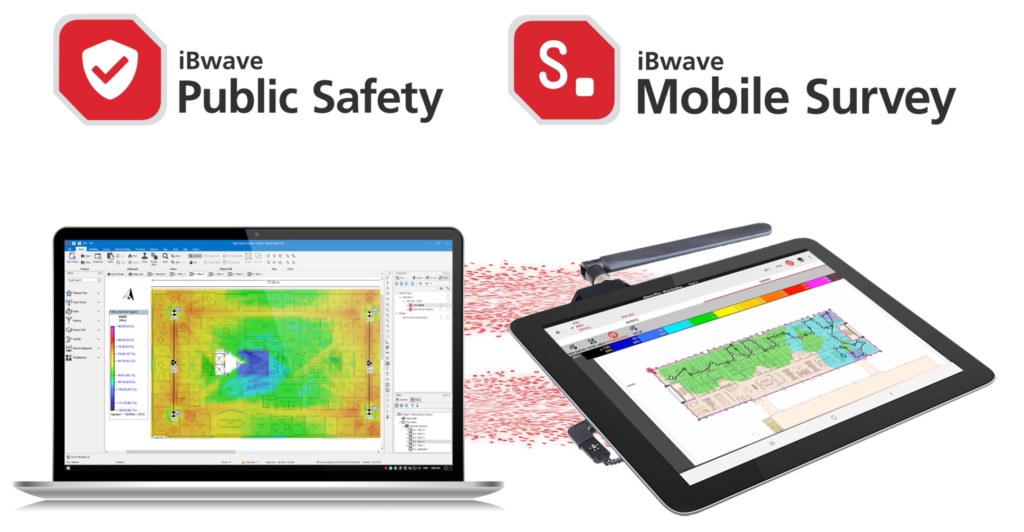Understanding the Basics of Public Safety Networks
Share

Public safety networks are the backbone of emergency response, law enforcement, and disaster management. These dedicated communication systems provide first responders with the tools they need to coordinate efforts during critical situations. In this blog, we’ll explore the essential aspects of public safety networks, emphasizing their importance, the role of RF (Radio Frequency) engineering, and the various communication technologies employed in these networks.
Importance and Role of Public Safety Networks
Public safety networks play a pivotal role in ensuring the safety of the public and the effectiveness of first responders. When a 911 call comes in or an emergency incident occurs, improved communication can be a matter of life and death. These networks enable first responders to share critical information, coordinate their actions, and respond rapidly to incidents, making them indispensable in times of crisis.
Navigating RF Propagation
RF engineering, or Radio Frequency engineering, is at the heart of public safety networks. RF engineers design, deploy, and maintain wireless communication systems that operate in the radio frequency spectrum. To understand these networks, it’s essential to grasp key RF concepts:
Signal: Information transmitted wirelessly, carrying voice, data, or video.
Frequency: Measured in Hertz (Hz), it refers to the number of complete cycles of a waveform in one second.
Wavelength: The physical distance covered by one complete cycle of a waveform, usually measured in meters (m).
Amplitude: Indicates the magnitude or strength of the RF signal.
Band: A portion of the electromagnetic spectrum within which radio signals can be transmitted and received.
Understanding these concepts is crucial for managing and optimizing RF signals in public safety networks.
Public Safety Radio Spectrum
Public safety agencies rely on specific frequency bands to ensure reliable and interference-free communication. These bands are chosen based on their characteristics:
VHF (Very High Frequency): Suitable for long-distance communications and often used in rural areas.
UHF (Ultra High Frequency): Offers better indoor coverage and is widely used in urban settings.
700 MHz: Strikes a balance between coverage and capacity, often chosen for nationwide networks.
800 MHz: Offers high capacity and is used in densely populated areas.
Selecting the right frequency band is a critical decision in network design, ensuring that coverage meets the specific needs of each environment.
Communication Technologies in Public Safety Networks
Public safety networks employ various communication technologies to ensure effective communication. These technologies include:
P25 (Project 25): A suite of standards designed to enable secure and interoperable digital radio communication systems. P25 is commonly used by federal, state, and local public safety agencies in the United States and has seen adoption in several other countries worldwide, including Canada, Australia, New Zealand, Brazil, India, and Russia.
LTE (Long-Term Evolution): A high-speed wireless communication standard providing fast data rates, quality of service (QoS), priority and preemption mechanisms, security features, and interoperability. LTE is essential for supporting real-time video streaming and data sharing in the field. It is widely used globally, including in countries like the United States, Canada, the United Kingdom, and Australia.
Tetra (Terrestrial Trunked Radio): A digital mobile radio standard optimized for professional mobile radio systems, providing features like group communication, presence information, and call priority. Tetra is widely used in public safety and other professional sectors, particularly in Europe and other parts of the world.
Understanding where each technology shines helps public safety agencies make informed decisions about their network infrastructure.
The Importance of Network Planning
Network planning is a crucial task in the network deployment or optimization processes. With proper network planning, you will ensure your public safety networks will work properly and will be deployed in the lowest time and cost possible. The process is typically as follows:
Survey > Design > Verify > Maintain

The Role of Network Surveys and Grid Tests
Ensuring reliable network coverage is paramount in public safety. Network surveys and grid tests are indispensable tools. Network surveys meticulously examine signal strength, quality, and coverage, while grid tests verify that network coverage meets specific requirements in each cell.
These assessments help identify coverage gaps, interference sources, and other network issues, empowering you to make data-driven decisions to enhance network performance and reliability and ultimately get your Public Safety Network approved by the Authorities Having Jurisdiction.

The Significance of Network Design
Network design is the bedrock of a robust Public Safety Network. It involves strategically planning the placement and configuration of network components to achieve desired coverage, capacity, and reliability. Network design ensures that critical areas have radio coverage spanning 99% of the floor area.
Furthermore, network design is pivotal in ensuring network resilience. Notwithstanding, redundancy, backup power systems, and disaster recovery plans are essential requirements to maintain network availability and reliability, even during power outages or emergencies.
With proper network design, you also save a lot of money and time as you minimize the need for further network optimizations and the time to deploy, which are often costly and time-consuming.
How iBwave Helps
Plan your Public Safety Networks for approvals quickly and effectively! iBwave offers specialized solutions for surveying, grid testing and designing public safety networks. Our tools streamline the network survey and design process, ensuring that it meets all regulatory compliance and safety requirements.
Learn more about iBwave Mobile Survey if you’re looking for a seamless and cost-effective solution for network surveying and grid testing or explore iBwave Public Safety, a software trusted by over 90% of the public safety market for designing the most reliable public safety networks!
With iBwave’s solutions, you can design and maintain networks that meet the needs of first responders and gain authorities’ approval!

Eager to Learn More?
If you want to learn more, take our free online course on the RF Fundamentals for Public Safety Networks! This one-hour course is a great fit for everyone from RF engineers to field technicians, students, or telecom journalists, who want to enhance their knowledge of public safety networks.

- Surveying Industrial and Logistical Private LTE & 5G Networks: All You Need to Know - June 28, 2024
- How To Survey 5G and LTE Networks Efficiently: Stepping Beyond Network Testing - February 8, 2024
- Understanding the Basics of Public Safety Networks - December 12, 2023

















